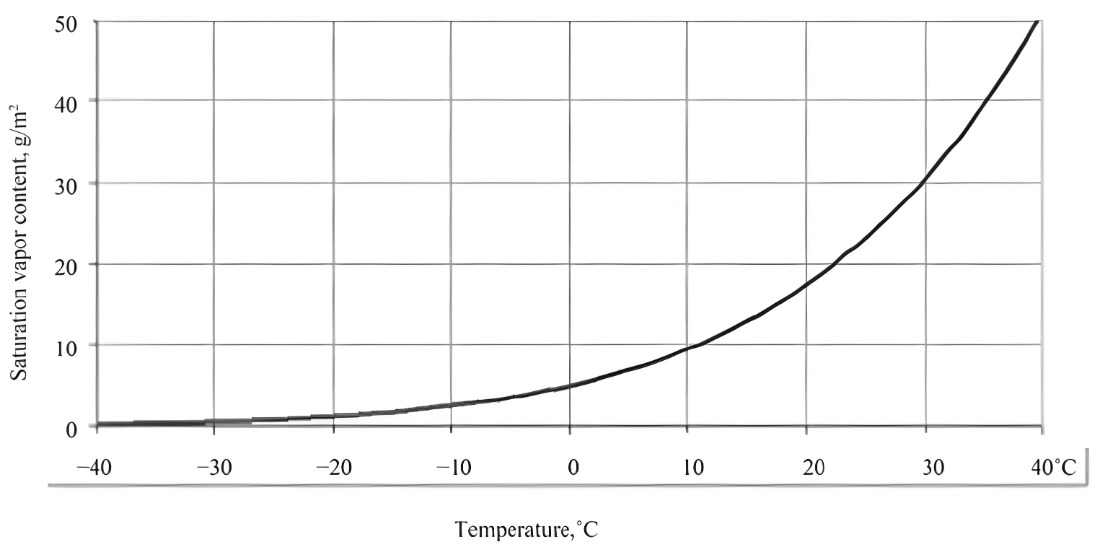The amount of water vapor in the air can be measured in many ways other than just humidity. Another indicator is the dew point, which is the temperature at which atmospheric water vapor condenses. Pilots and architects both often make use of the dew point.
Water vapor may be absorbed by the air at a greater rate as temperatures rise. This is due to the fact that the atoms or molecules in a gas move in tandem with their heat. More H2O molecules can escape from a water surface and enter the air when the tiniest components of air move more quickly. Furthermore, water molecules that are already spinning rapidly have a difficult time coming together to form droplets. As a result, there are more opportunities for water vapor, or free water molecules, to be present in warm air.
Methods to describe the humidity
There are a variety of methods to describe the level of humidity in the air. For this purpose, relative humidity is the standard. It establishes a correlation between the actual humidity in the air and the highest humidity that might exist at that temperature and pressure. The so-called “dew point” is a more realistic indicator of humidity. It represents a made-up temperature, namely the one at which water vapor would condense.
To achieve saturation, air must be cooled below its dew point.
Is it not strange that temperature may be used to define humidity? The solution is elementary: There will be condensation if you let a parcel of air cool slowly enough. Dew forms, wetting the grass and other surfaces, and fog is produced. The dew point is the ambient temperature at which condensation begins. In fact, it may be tailored to any kind of air, from humid urban air to dusty desert air. This is due to the fact that even arid air contains some moisture.

The more humid the air, the closer the dew point is to the actual temperature. During the summer, we can sense the air is highly humid when the temperature drops to about 22 degrees Celsius (72°F) and the dew point is around 20 degrees (68°F). This is unsettling to a lot of folks. Perspiration on the skin then slowly disappears. When the air is completely saturated with water vapor, the dew point and the actual temperature are the same. In all other circumstances, the dew point is lower, often falling below freezing during the winter. The dew point is sometimes known as the “frost point” when the temperature drops below freezing. Naturally, in this circumstance, frost forms on surfaces rather than dewdrops.
The use cases of the dew point
The dew point is useful in various contexts. It’s used by meteorologists, for instance, to predict the night’s coldest temperature: In the evening, a considerable cooling is to be anticipated if the dew point is much lower than the present temperature, but only if there is no breeze. A severe cooling is typically prevented when the air near the ground combines with the air in the upper layers of the atmosphere.
A greater dew point indicates a larger concentration of water vapor in the atmosphere.
The dew point is used by pilots as a proxy for the potential for ice and fog. Additionally, the cloud base of cluster clouds can be calculated from the dew point, which is crucial knowledge for pilots. The cloud base, in meters, can be roughly calculated by multiplying the difference between the current temperature and the dew point by 125. The concept is as follows: when a parcel of air rises from the ground, it cools, and, depending on the dew point, condensation may or may not commence at a certain height.
Construction workers also need to know the dew point. A poorly built home’s roof or walls, or even the masonry itself, might experience temperature drops low enough to produce condensation. It’s possible for water to condense and mold to grow there. A home should be planned meticulously from the ground up to ensure that the dew point is never reached under normal conditions. This requires architects to think about things like the heat conductivity of the building materials in addition to the local climate.
How is the dew point measured?
There is a straightforward method for determining the dew point. A special instrument called a dew point hygrometer is used for this purpose. As its name implies, the instrument’s primary function is to act as a mirror. Accurate regulation of its temperature is possible. When sluggish cooling causes the mirror to fog up, that’s the dew point. To accurately record the duration and temperature of the condensation, a light-emitting diode and photodiode are used to monitor the reflectance of the mirror surface.
The dew point can be calculated indirectly using a formula if the air pressure is held constant and the current air temperature and humidity are known.


